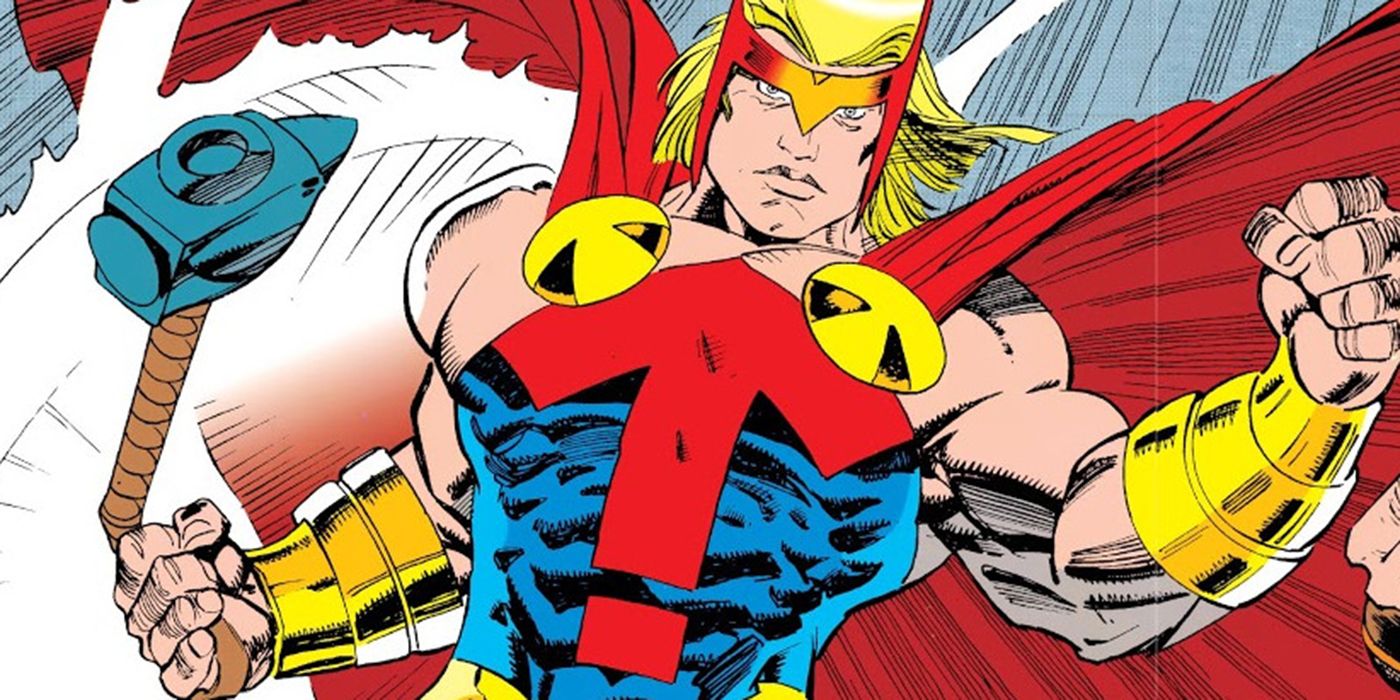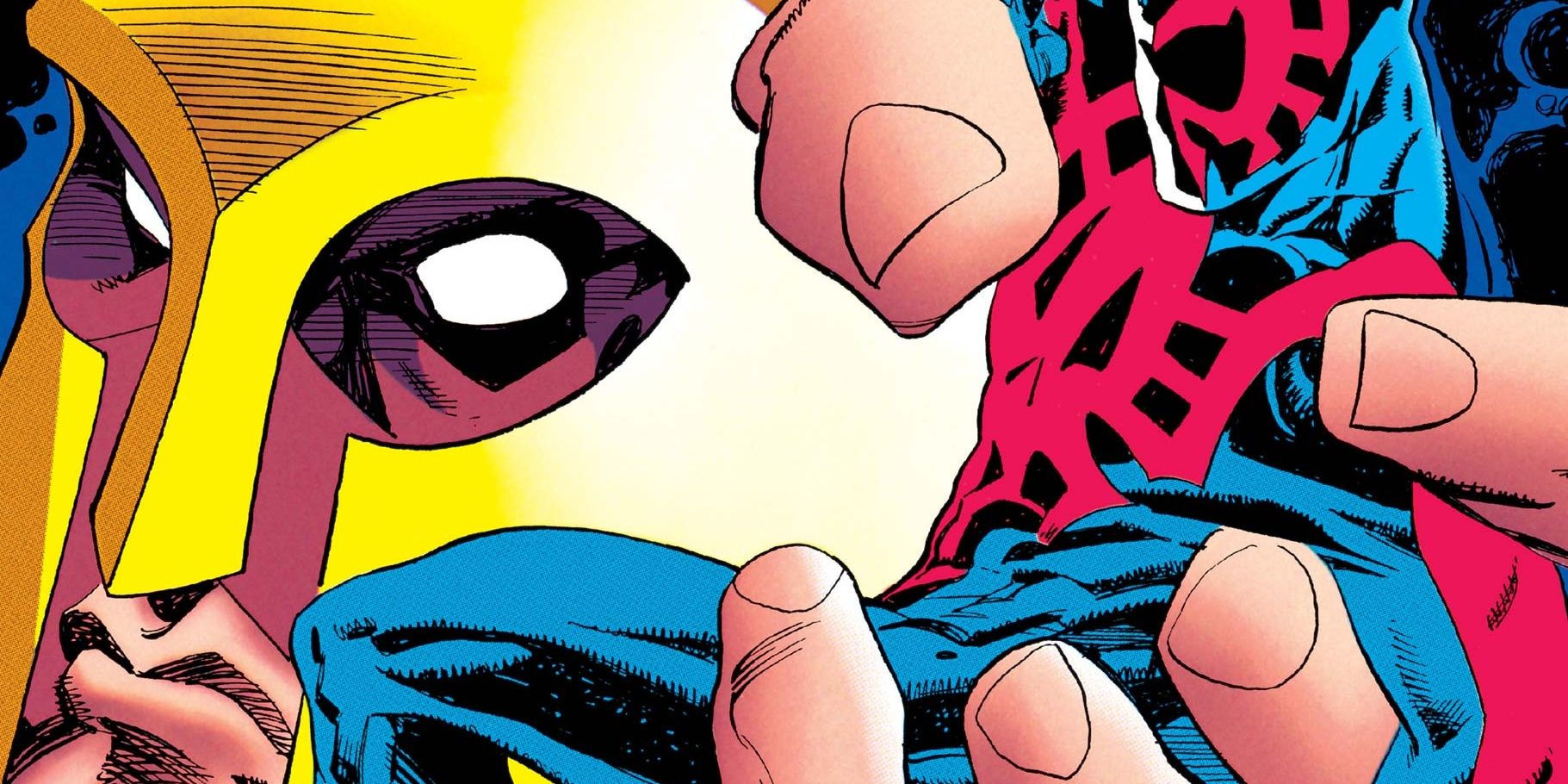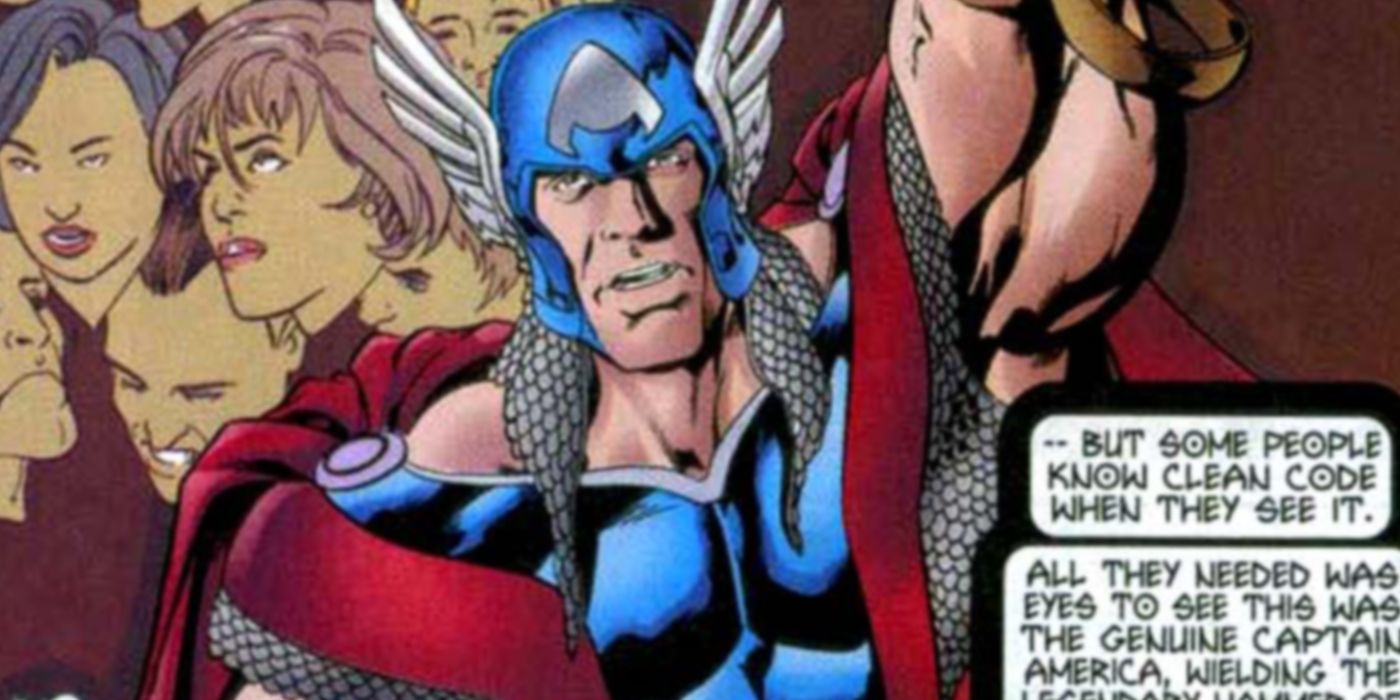
Ever since his introduction in the Silver Age, the mighty Thor has been one of the premier faces of both the Avengers and the Marvel Universe in general. Combining superheroics with cosmic godly mythology, he's perhaps one of the best examples of co-creator Jack Kirby's typical themes. Despite this bombastic nature, he wasn't always a well-regarded character, particularly in the '90s era of Marvel comics.
The lack of popularity for the Avengers in the '90s allowed Marvel to heavily reinvent them in their futuristic 2099 imprint. The future of 2099 saw Thor reimagined entirely, resulting in a wannabe hero that was both more and less accurate to the figure in Norse myth. Here's what happened to the original Thor and how that paved the way for his usurper in the 2099 continuity.

The future of 2099, which was eventually established as a separate continuity from the main Marvel Universe, was one without many of the iconic heroes from the Heroic Marvel Age that began with the debut of the Fantastic Four. This was explained as being the result of the growing greed of the cyberpunk era, which was ruled by the Alchemax Corporation. As it grew into power, it attempted to hold onto that power by striking back against all who would logically oppose it.
This saw them gain control of the media, academia and all other forms of programming, allowing them to strike out against and do away with enemies with relative ease. This meant fomenting hatred against both mutants and mutate superhumans, who the general public began to turn against universally. Heroes either disappeared or were killed off, with Thor and the Asgardians eventually leaving Earth.

The God of Thunder finally returned during the 2099 crossover event, "The Fall of the Hammer." This storyline saw a new group of Norse gods coming to Earth, but they weren't quite what they seemed. The Aesir were venerated through the Church of Thor, which revitalized worship for the deities in an era where even the classic mythological versions of them had long since been forgotten.
The janitor of this church was Cecil McAdam, who chose to later become a new version of the god Thor and debuted in 1993's Punisher 2099 #2, by Pat Mills, Tony Skinner and Tom Morgan. Undergoing a nano-engineering procedure, he became the Thor of the new age. Alongside new versions of Heimdall, Loki and Hela, he hoped to restart the age of heroes as it had existed years ago during the era of the Marvels. In actuality, however, these new Aesir were the creations of Alchemax. Their goal was to distract the populace from the company's sinister dealings, as well as take out the new brand of heroes that had begun to disrupt the system.
The ruse was eventually revealed to Doom 2099, who depowered McAdams by attacking the hammer that gave him strength. His passion for heroism and serving Alchemax were subsequently reignited, which brought him into conflict with Doom, Spider-Man, the Punisher and Ravage. The Punisher seemingly destroyed Thor's hammer, and when the false god jumped toward the explosion to catch the weapon, he was seemingly killed by the blast.

The Thor title would appear again in the 2099 future, however, in 1998's imprint-ending Marvel 2099: Manifest Destiny, by Len Kaminski and Mike McKone. In this potential 2099 offshoot future, Spider-Man 2099 now ran Alchemax, hoping to change the company around for the greater good. Captain America was rediscovered, found once again in a block of ice.
He also recovered Mjolnir, the hammer of the true Thor. Deemed worthy of wielding it, Steve Rogers becomes a fusion of Captain America and Thor. Together alongside Spider-Man, the Mighty Captain Thor set about helping the addled world of 2099, paving the way for a potentially divine ending for that world.
0 Comments